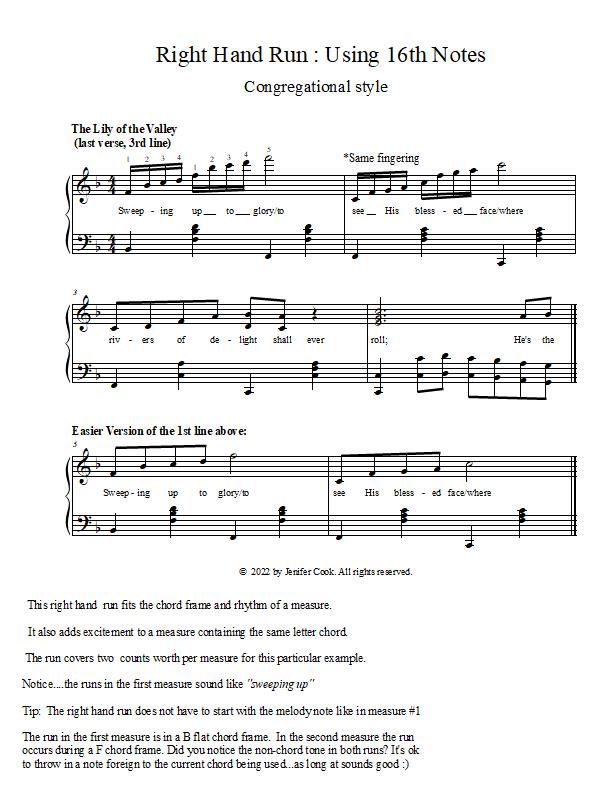How To Add Sixteenth Note Runs in a Hymnal
Tuesday, May 3rd, 2022
I’m almost finished with a tutorial showing how to add sixteenth note runs to hymns. (For the late intermediate pianist and beyond)
This particular tutorial will deal with adding runs to congregational accompaniment.
There will be five pages of examples for this particular run in various keys, time signatures and different hymn excerpts.
Each example will not only show the run application but will also share a graceful way to work out of the run.
This Sixteenth Note Run tutorial will be available in my online store asap.
I’ll publish a brief you tube commercial before publication.
For adequate preparation on my part….What questions do you have about playing runs in hymns or what difficulties do you face when playing runs etc.? Thanks in advance for any feedback!








